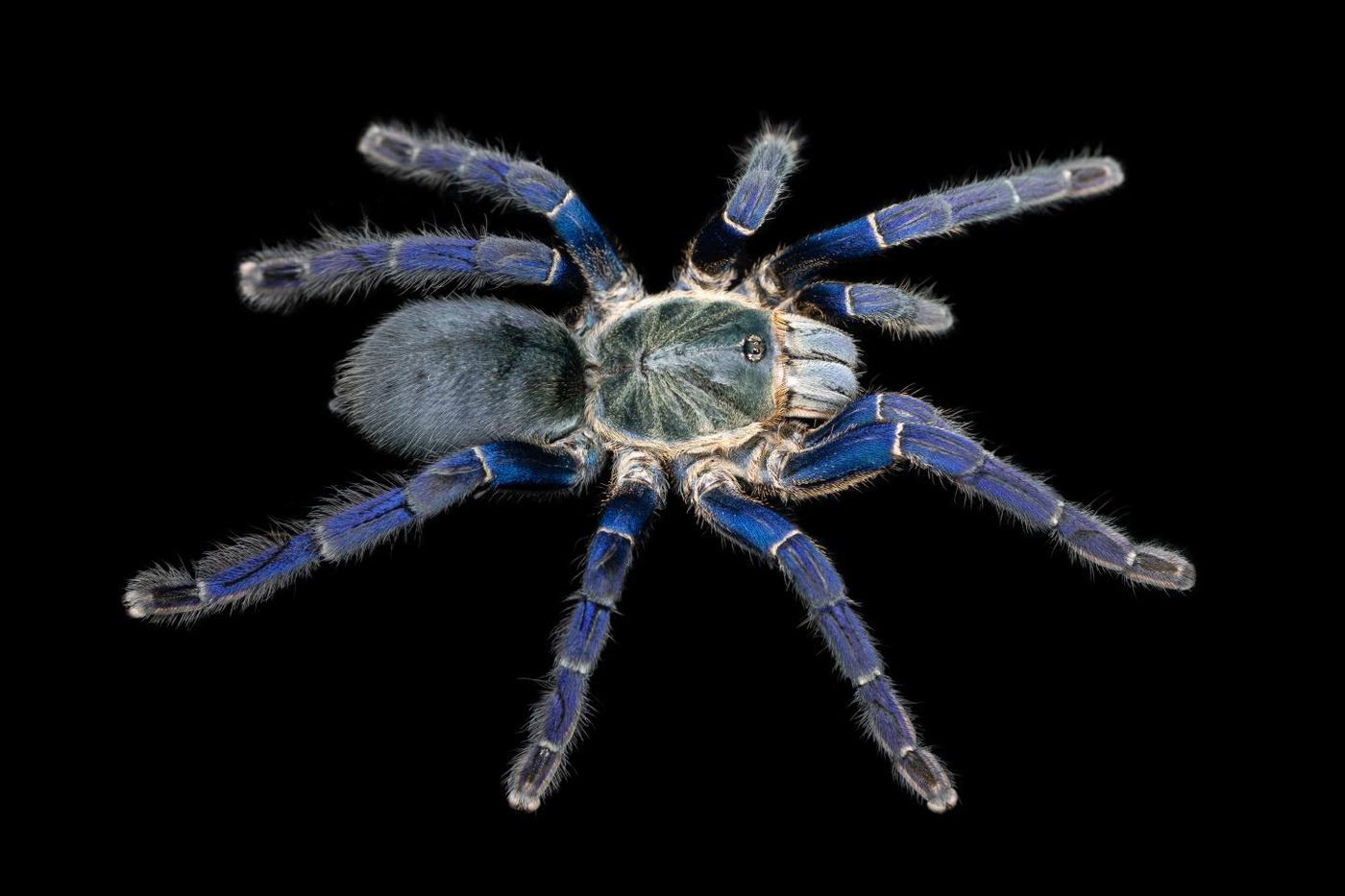In a Surprise, Tarantulas Seem to Have Color Vision
There are some wildly colored animals in nature, and tarantulas are no exception. Researchers wondered why some types of these big hairy spiders that tend to be nocturnal hunters sport vibrant blue and green colors. It was long thought that tarantulas could not differentiate between and potentially could not even see colors.
New work is challenging that assumption, however, and suggesting that these vivid blue colors might be a part of the way tarantula mates communicate, while the bright green colors on other tarantulas are helping them camouflage themselves in foliage. This work, which also suggested that these spiders may be able to perceive blue colors, has been reported in the Proceedings of the Royal Society B.
In this study, the researchers analyzed the expression patterns of light-sensitive proteins called opsins that are often present in animals' eyes. Contrary to assumptions, they found that most tarantulas do indeed have an array of opsins that are usually found in spiders that have color vision and are active during the day. Tarantulas may, therefore, be able to see colorations on other tarantulas.
The scientists traced the genomics of tarantulas and found that their 110 million-year-old ancestors were probably blue. They also determined that these blues probably do not deter predators from attack, and may instead confer an evolutionary advantage by attracting mates.
"While the precise function of blueness remains unclear, our results suggest that tarantulas may be able to see these blue displays, so mate choice is a likely potential explanation. We have set an impetus for future projects to include a behavioral element to fully explore these hypotheses, and it is very exciting to consider how further studies will build upon our results," said the co-first study author Dr. Saoirse Foley of Carnegie Mellon University.
The scientists suggested that how green colorations evolved in particular species may have depended on whether or not they lived in trees. While green colors have been gained only a few times in some types of tarantulas, they've never been lost.
Blue colorations, however, were likely lost more often than they were gained. Species that live in the Americas and Oceania (New World) have tended to lose their coloring, while in Europe, Asia, and Africa (Old World), species seem to have gained this characteristic.
"Our finding that blueness was lost multiple times in the New World, while regained in the Old, is very intriguing. This leaves several fascinating avenues for future research when considering how the ecological pressures in the New and the Old Worlds vary," said co-first study author Dr. Vinod Kumar Saranathan of Yale-NUS College. "For instance, one hypothesis would be differences in the light environments of the habitats between the New and the Old World, which can affect how these colors might be perceived if indeed they can be, as our results suggest."
Sources: AAAS/Eurekalert! via Yale-NUS College, Proceedings of the Royal Society B









